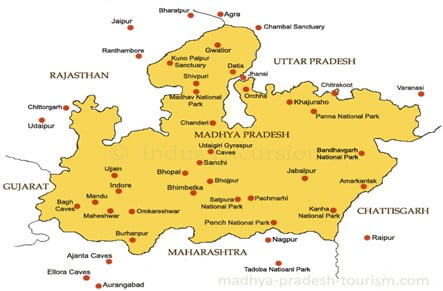Environment & Ecology, Geography
In News: Cheetahs likely to arrive in Madhya Pradesh’s Kuno National Park before August 15.
- India is one step closer to bringing back the world’s fastest animal, which has been extinct in the country since 1952, with an agreement that was signed between the government and the visiting Namibian Deputy Prime Minister.
- The agreement, which has been negotiated for some years, will prepare the ground for the relocation of the first batch of cheetahs from southern Africa to Madhya Pradesh’s Kuno National Park, with officials trying to complete the first transfer before August 15.
- The MoU focused on biodiversity conservation, and the sharing of expertise between the two countries, technological applications, collaborations on climate change, pollution and waste management, and the exchange of personnel for training and education in wildlife management.
- While the current carrying capacity for the Kuno National Park is a maximum of 21 cheetahs, once restored the larger landscape can hold about 36 cheetahs.
Kuno National Park
- Kuno National Park is a national park in Madhya Pradesh, India, established in 1981 as a wildlife sanctuary.
- State government changed the status of the wildlife sanctuary to Kuno National Park in 2018
- It is part of the Khathiar-Gir dry deciduous forests ecoregion.
Flora
- The vegetation of the protected area includes dry savanna forest and grassland and tropical riverine forest.
Fauna
- The main predators occurring in the protected area are Indian leopard, jungle cat, sloth bear, dhole, Indian wolf, golden jackal, striped hyena and Bengal fox.

Cheetah
- The cheetah is one of the oldest of the big cat species, with ancestors that can be traced back more than five million years to the Miocene era.
- The cheetah is also the world’s fastest land mammal that lives in Africa and Asia
| Features | Asiatic Cheetah | African Cheetah |
| Physical Characteristics | Smaller and paler than the African cheetah. Has smaller head and a longer neck. Usually have red eyes and they have a more cat-like appearance. | Bigger in size as compared to Asiatic Cheetah.
|
| Image |  |
 |
| Distribution | Around 40-50 found only in Iran. | Around 6,500-7,000 African cheetahs present in the wild. |
| Status | IUCN: Critically Endangered
CITES: Appendix-I of the List |
IUCN: Vulnerable
CITES: Appendix-I of the List |
Source: The Hindu
Previous Year Question
Q.1) Which one of the following protected areas is well-known for the conservation of a sub-species of the Indian swamp deer (Barasingha) that thrives well on hard ground and is exclusively graminivorous? (2020)
- Kanha National Park
- Manas National Park
- Mudumalai Wildlife Sanctuary
- Tal Chhaper Wildlife Sanctuary











